The Canon EOS R50, A Quick Bench Test
Indirect Travel Fun
- How much is it this time???
- Early Morning National Express, Mid Moring Terminal 3
- Elegantly Lounging around Terminal 3 (Cathay Pacific and American Airlines Lounges)
- American Airlines AA99 London Heathrow to Chicago (Main Cabin Extra)
- Into the USA, Crowne Plaza O’Hare
- Hyatt Regency O’Hare
- Airplane Art Extra: From the Hyatt Regency O’Hare
- Chicago Classics: Mannys Deli and Cafeteria
- Bench Test and First Impressions: Canon EOS R50
- Rebuilding a Legacy: Central Camera, Chicago
- Chicago Classics: Peaquod’s Pizza
- Back to O’Hare, Swissport Lounge Chicago T5
- Finnair AY10 Chicago O’Hare to Helsinki Vantaa
- A quick ground-side visit, and an even quicker stop at the Finnair Lounge
- Finnair AY1337 to Helsinki Vantaa to London Heathrow
- The Unexpected Coach Home
- Expect the Unexpected
Bench Test: Canon EOS R50
Sigh. I have to write some of this I suppose. Welcome to a quick bench test and live use of a Canon EOS R50.
The Canon EOS R50 fits into the space that’s been vacated by the EOS M50 (Canon’s previous attempt at a mirrorless mount), and I’d argue, some of the lower-cost “Rebel” family cameras that we’ve seen in the past.
The EOS R Family has widened out a lot since I went Mirrorless, with the R3 at the top end, and the R100 at the bottom end, with many different cameras appearing (from the RP, R5, R6, R7, R8 and R10. So there’s a lot more choice, both in quality, quantity and usability.
There is also movement in the size of the sensor – whilst the first units out were Full-Frame (35mm equivalent), it’s taken time for the APC-C (1.6X Crop) cameras to appear. These have the upside of cutting costs thanks to a smaller sensor, at the cost of a crop factor.
That has benefits and pain points – depending on your mood.
This is a quite recent addition to the Canon EOS R family, launching in February 2023.
It’s tiny at 116.3 x 85.5 x 68.8 mm as a camera body, with the kit lens adding not a lot more to it. It has a base weight of 328g. although this will be dependent on your choice of lens.
Because – yes, it is a mirrorless camera, with an R mount. That opens up the library of Canon R Lenses as well as EOS RF lenses (and more if you’re creative).
For those who count and peep pixels, it features a 24.2MP sensor. That helps drive the autofocus system. It has a 3” screen (with tilt and flip), with a 0.9x Electronic View Finder (which has taken the place of a mirror).
It’s priced at t $679.99 (£789), body-only. A kit with the retractable RF-S 18-45mm F4.5-6.3 IS STM sells for around $799.99 (£899), and a two-lens kit that adds a new 55-210mm F5.0-7.1 takes the MSRP up to $1029.99 (£1099).
Autofocus is driven by subject-drive focal AF, be it people, animals and objects.
Around the body
On the top, we have a much more simplified control dial to select your photography mode. There’s also a record button for video, a shutter button, an adjustment dial and an ISO button.
This being much more of a consumer camera, this features a lift-up fill flash and a microphone.
The back controls are compressed, with control D-Pad, focus lock controls, as well as playback functions,
Side inputs
On the side, there’s a USB-C port (PD Capbile) and a Mini-HDMI connector.
On the other side is a sole microphone socket. Sadly, it’s not a combi-jack, so you can’t listen to the monitor the recording.
Time to take it out to battle and see what comes out.
Focal throw with the kit lens
For this test, we’re doing a landscape scene (if you can call the Kennedy Expressway a land space). We’re zooming towards the L Train shed in the distance. Again, for a true focal length, multiply the distance by 1.6x.
For these images out of the camera, Canon’s colour space has been applied, with the Adobe Lightroom Classic defaults applied.

18mm
There’s a nice amount of zoom space with the kit lens, giving a reasonable throw, with enough detail to play in for those who enjoy peaking at pixels. It shows a little of what it can do.
Let’s move into the city and see what happens. These photos were taken over a morning and afternoon in Chicago.
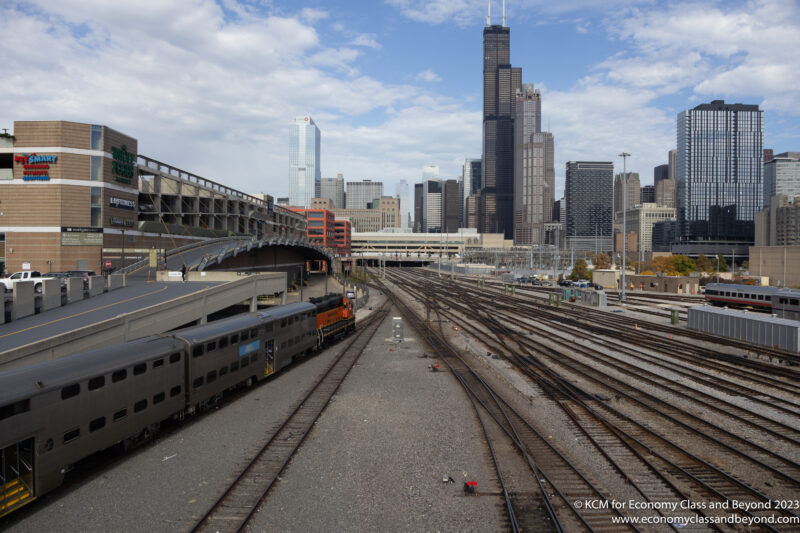
We’re kicking off with Quality Train Contnet, with BSNF Line Train heading into the tunnels to lead to Chicago Union Station. To the right is part of the Amtrack Yard. Dominating the skyline is the Sears Tower. And yes. I’m still calling it that.
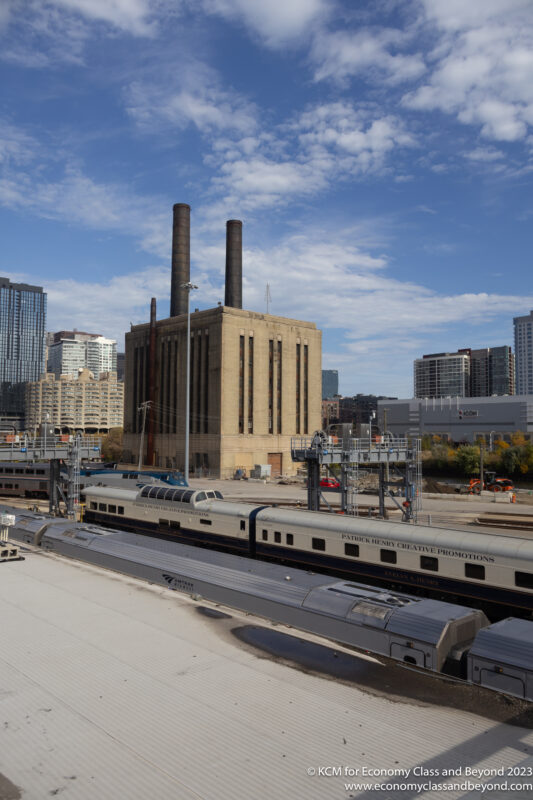
Private rail cars, juxtapositioned against a Power Station.

Motion can be hard when things are coming towards you – look at the car with the scooter rider perilously in the middle of the road. That does not feel like a safe cycle/scooter lane in the least.
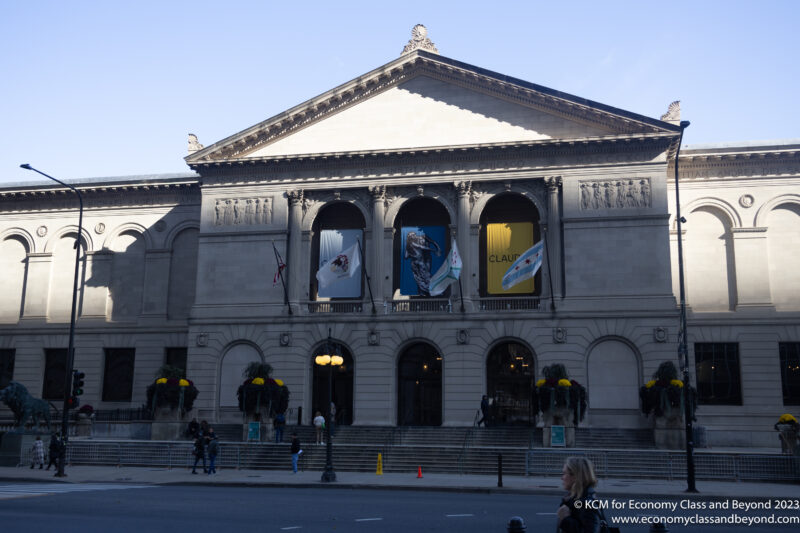
Shadow and contrast can be hard things – especially in a skyscraper city like Chicago, which can make shooting places like the Art Institute more than a little hard.
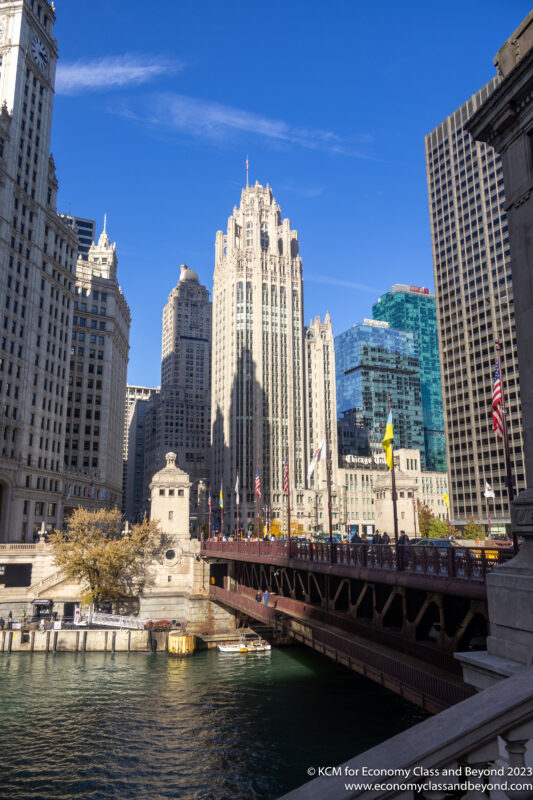
As we approach the North Michigan Avenue bridge, details can get lost in the shadows again. Thankfully, Lightroom can pull them out for you.
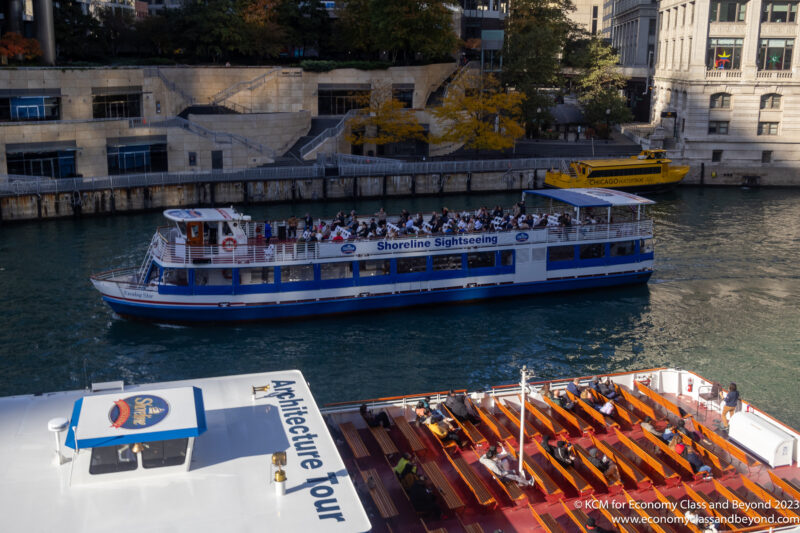
It’s amazing how busy the Chicago River can get with tourist traffic. At least the river isn’t green – something to be thankful for.
Let’s shift to evening and night. Again, we’re downtown.
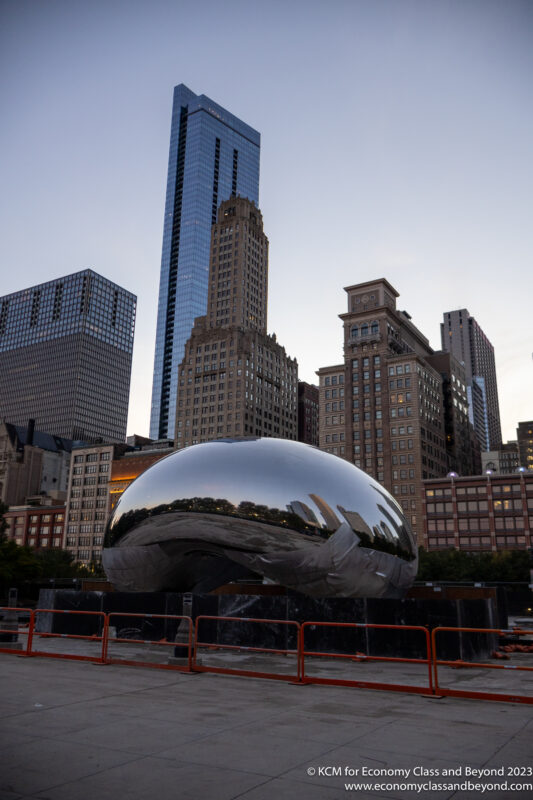
Sadly, someone did put the Bean in a corner- also look at the corners with a lot of vinegetting.
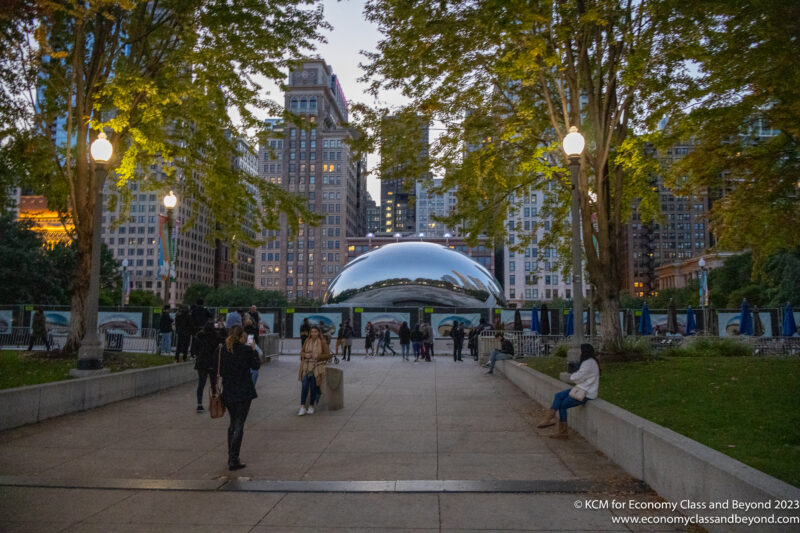
You can make it work… but should you?
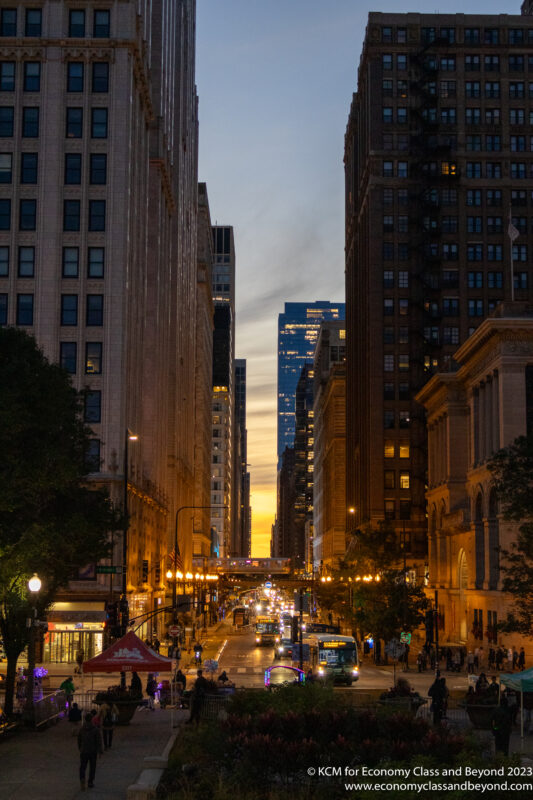
The beauty of a digital negative is you can pull details and adjust to your heart’s content. Whilst the camera exposed this okay, Lightroom pulled the image out of the bag, bringing out the exposure nicely.
Looking toward the Wriggly Building and the Tribune buildings, again, a lovely blue evening… let down by a little vignetting.
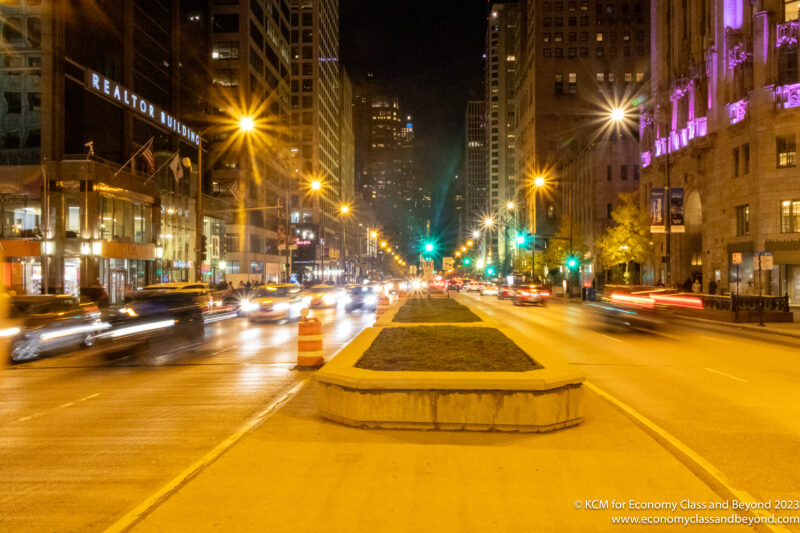
Trying light trails when you’re on the tripod is hard. But there’s a lovely sense of movement in this photo (0.5/s exposure time).
I also tried something stupid – mounting an EF100-400mm lens, with an adaptor, and the R50 mounted at the back. I swear it looks more silly than the Canon 100D did when it had this lens mounted.
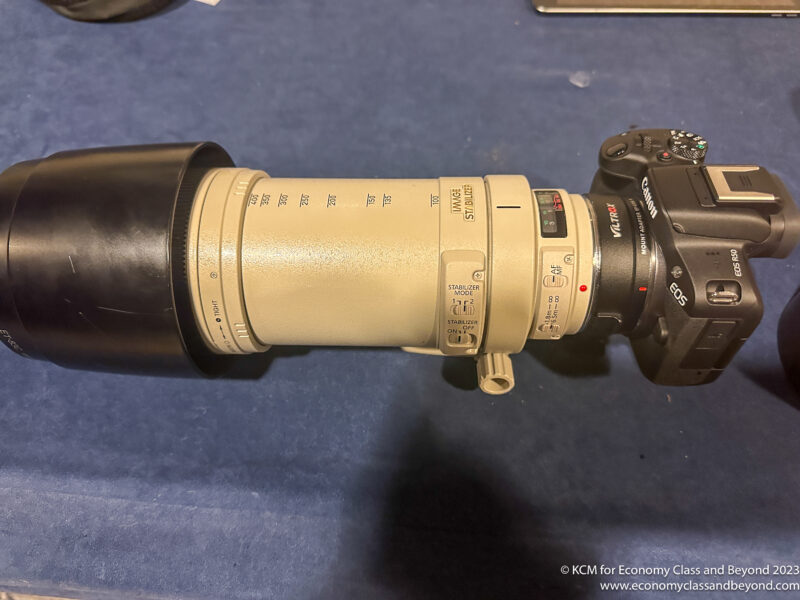
This is a thing, and we all have to live with it. I’m not remotely sorry.
Having a balcony room at the Hyatt Regency O’Hare helps here for taking airplane pictures.
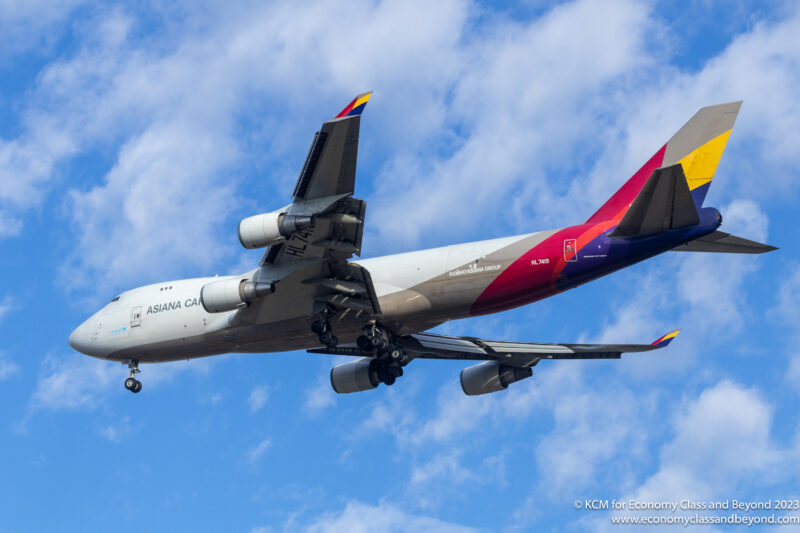
One of the first pictures I took with this – an Asiana Cargo Boeing 747-400F.
With crop factor, you can throw a lot of distance with the lens – turning this into the equivalent of a 640mm lens at full length.
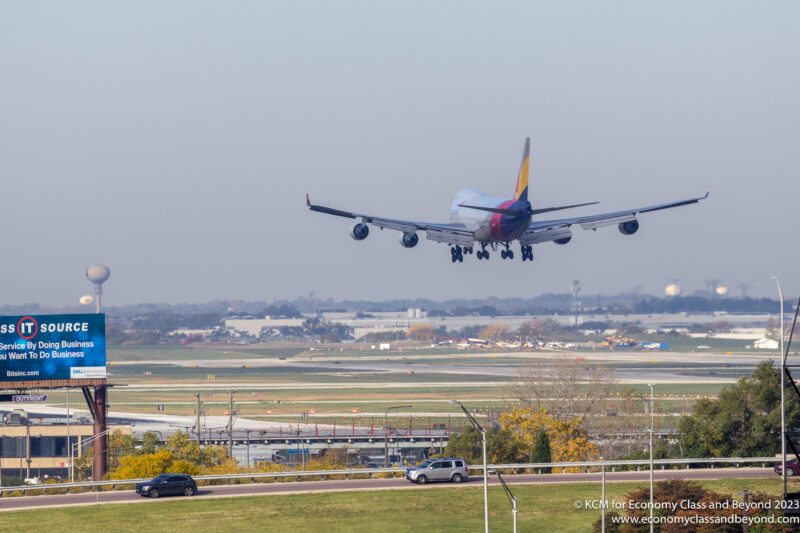
That’s not a shot I normally get.
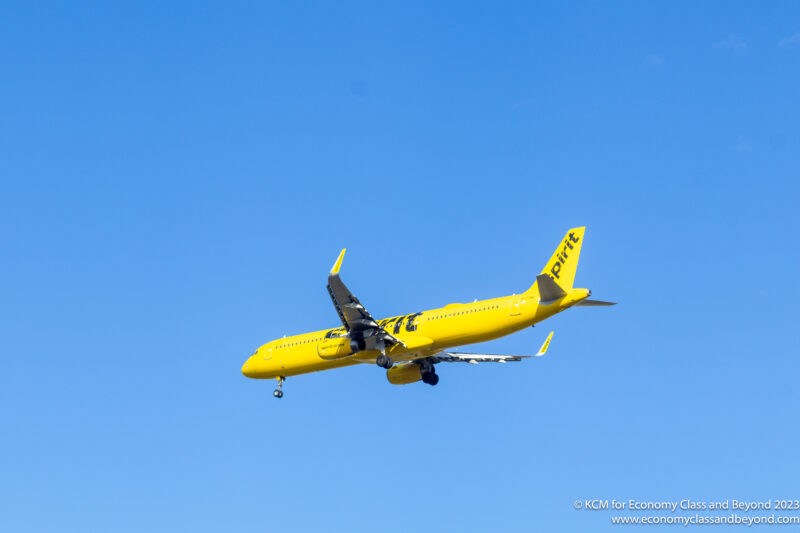
The colour science pops here – with the blue background and the Yellow Spirit A321 coming into land
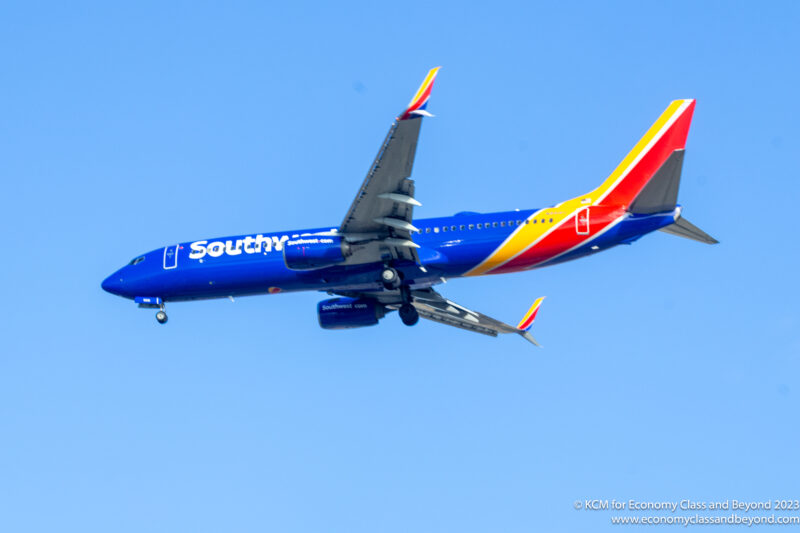
The crop factor comes into play again – this Southwest Boeing 737 pops out of the sky at a 135 mm focal length.

And the blues are distinct in this United Airlines Boeing 737 as it approaches O’Hare.
Some good things
- Man, it’s light. I’ve almost forgotten what a small camera is like to use (my last being a Canon 100D). Being used to the EOS R and the 6D, you forget what a small camera is sometimes.
- It’s pocketable. I’ve got my ageing Star Wars fleece I picked up in Mong Kok East many moons ago. And fits in the pocket, with room to space. That makes it a default choice for going out and doing basic street photography.
- AF is rock solid – Autofocus is something that Canon has worked on. With the Digic X processor, along with Canon’s Colour, you can be sure that what you’re locking onto is what you get.
- The EVF is more than passable – it isn’t as bright as some I’ve used, but it is bright to the point of use, with some of the rotation tricks it was taken from other R series cameras
Some meh things
- CRAW/RAW performance is … middling – With the SD Cards I tested, I found a frame buffer of 8 CRAW/RAW files per burst was achievable. That is reasonable, but the frame buffer in general seems to be a lower priority than what I would normally expect. For those who enjoy action photography (or spamming the shutter button), this is worth checking out.
- The kit lens is a soft thing – Whilst some people appreciate a softer image, it does feel a little too soft for my liking. Thankfully, it can be paired with an RF to EF adaptor to take any Canon lens (apart from the EOS M family. You’re stuck). And it suffers from vinigeretting a lot. At least you don’t have to spend hours doing image correction to adjust the pincushion effect – unlike some lenses by other manufacturers, I’ve had to spend hours in Lightroom in the past.
- The RF-S Lens family is… limited – Why do I get this feeling we’re going to have only a few special RF-S lenses… like we had with the EOS EF-S Lenses? There’s a lot of room here for developing specialist consumer lenses… but Canon is feeling out of the market – even if they released a new “vlogging” lens recently.
- Its size can be a barrier – I’ve gone on how I like the small body. That has a downside – it’s rather small in hand. That has downsides too if you’ve got bigger hands – or hands that like to drag over a body while holding or using the camera.
And an annoying as HELL feature
I’ve seen minimal coverage of this – but if you’re planning to pair this with a studio set of lights, the camera has a cold shoe installed – not a hot shoe.
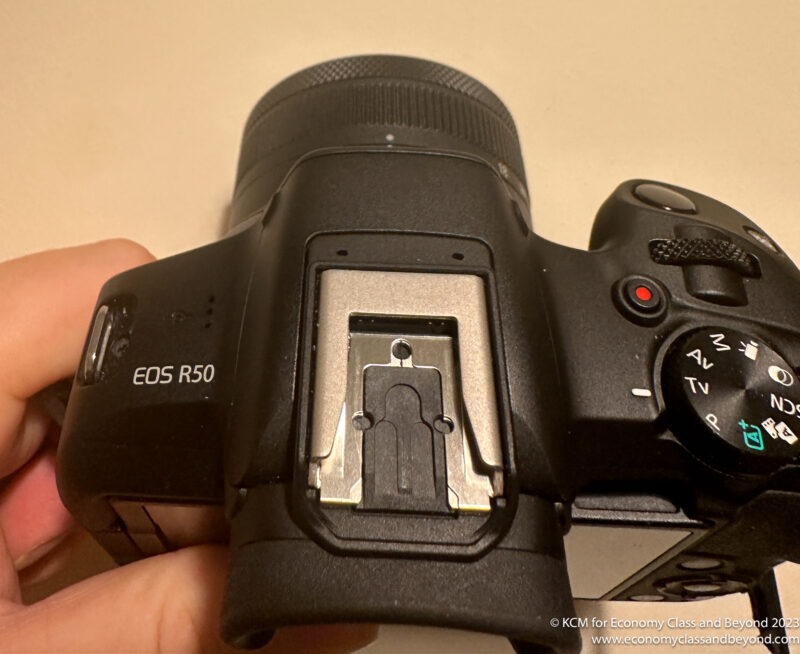
I’m actually annoyed about this.
If you want to turn the cold shoe, you’re going to have to buy a Canon accessory shoe adaptor (as the cold shoe has a mindset to interface with Canon Flashes and options… but screw you if you’re going to plug your own flash or hotshoe communicating device in.
More to come
I’ll have a lot more thoughts in the future – but there’s enough to get started.
If you’re considering an EOS R50, there are good review sources out there. I’ll be looking further into this as a photographer’s camera and how it survives some of the joys of travel photography over the next few weeks (there’s a hint if ever I dropped one).
Heck, I might even use the video feature and test it… well, maybe.
Next:
We’re going to keep our focus locked photography in Rebuilding a Legend: Central Camera Chicago and how
Welcome to Economy Class and Beyond. Your no-nonsense guide to network news, honest reviews, in-depth coverage, unique research, as well as the humour and madness I only know how to deliver.
Our Social Media pool has expanded. You can find us across most networks as @economybeyond on Twitter, Mastodon, BlueSky, Threads and Instagram!
Also, remember that we are part of the BoardingArea community, bringing you the latest frequent flyer news from around the world.
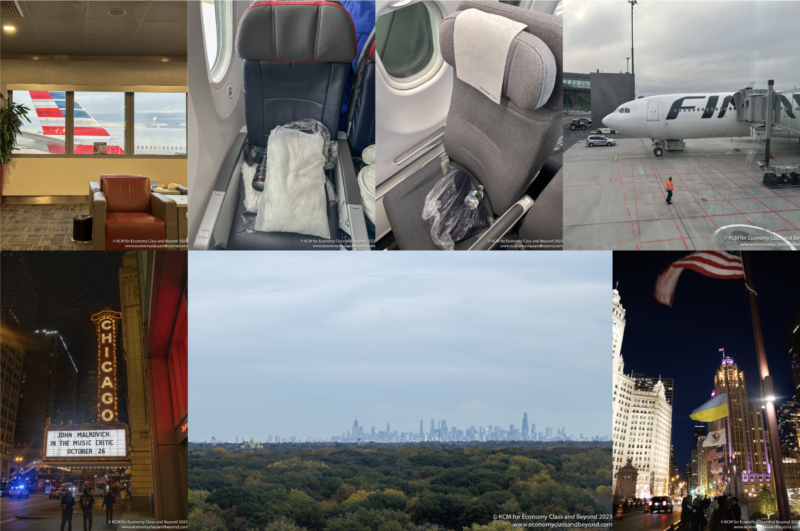
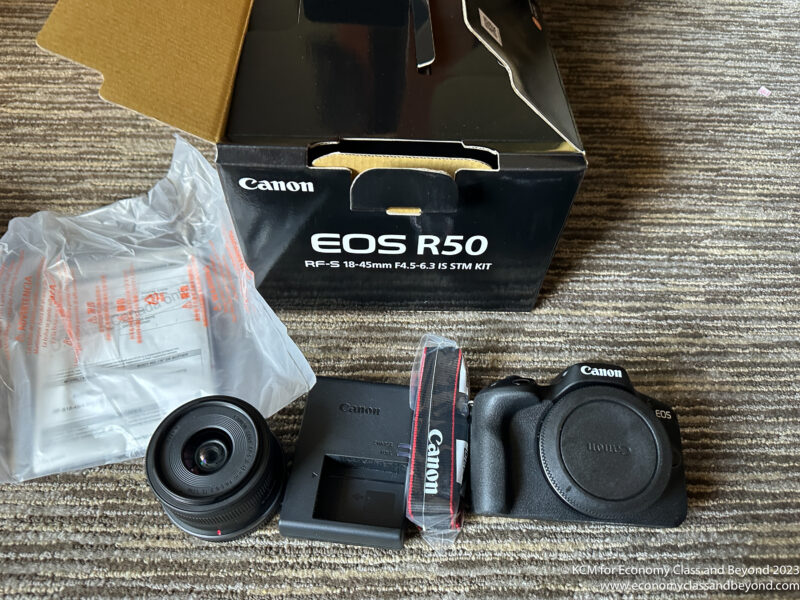
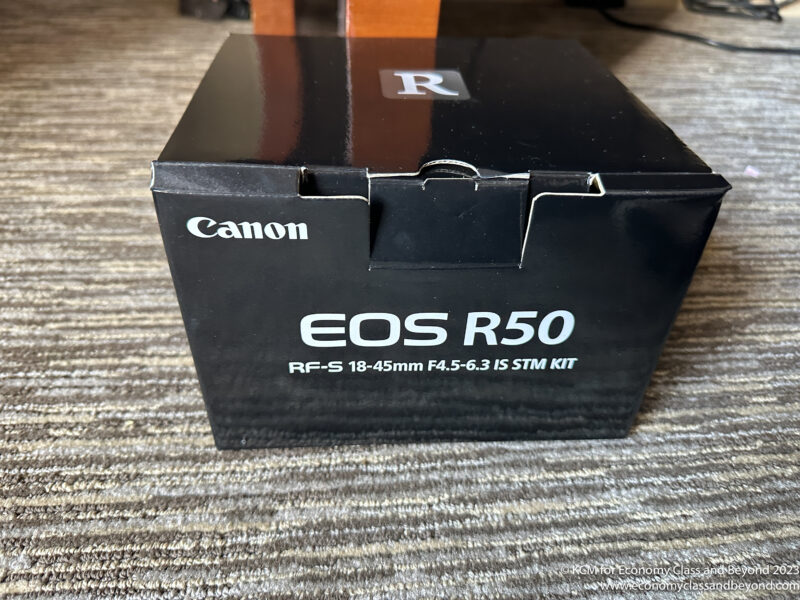
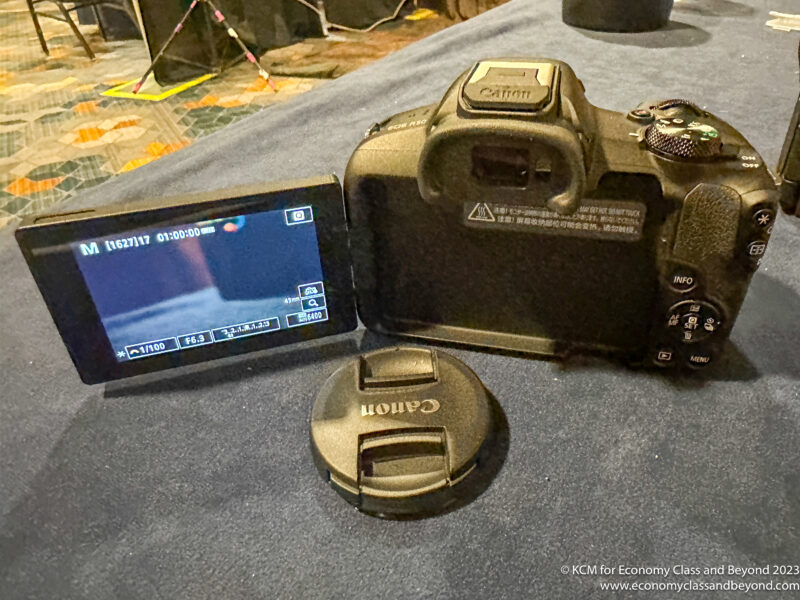
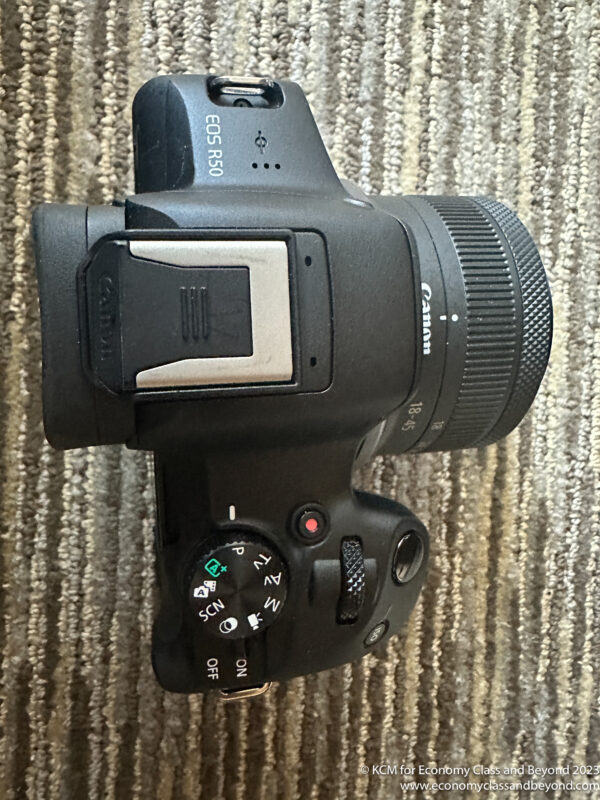
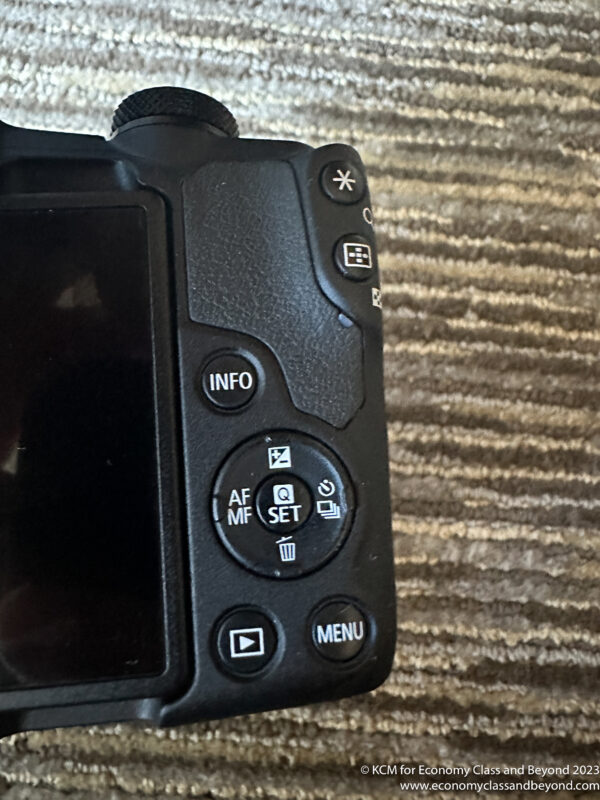
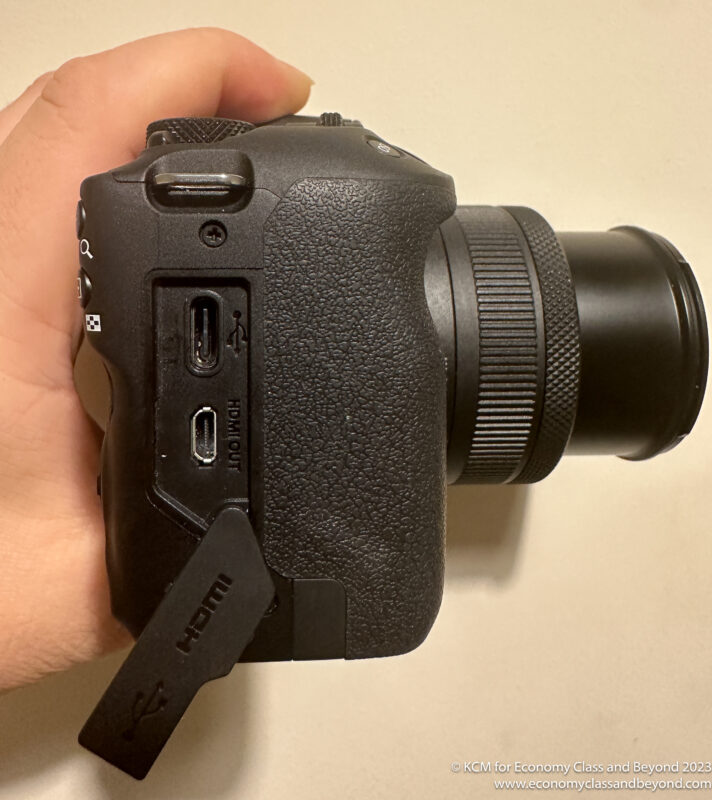
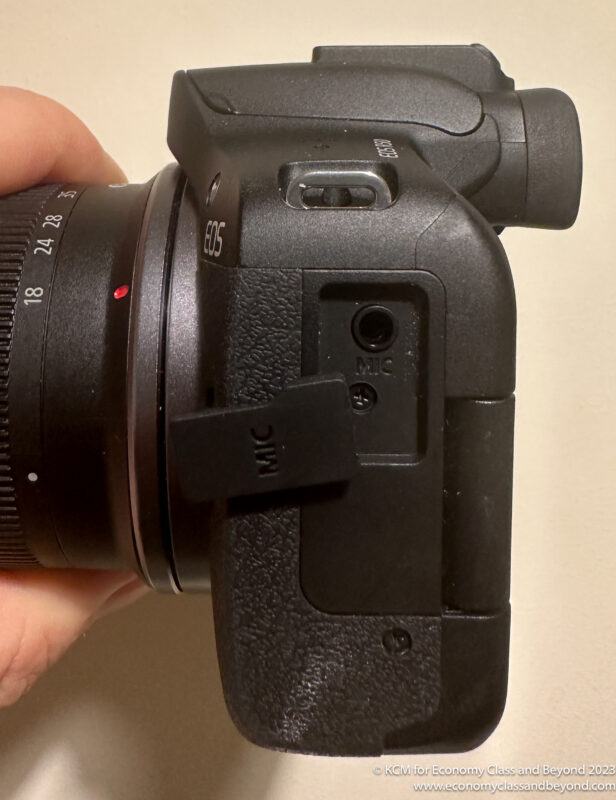
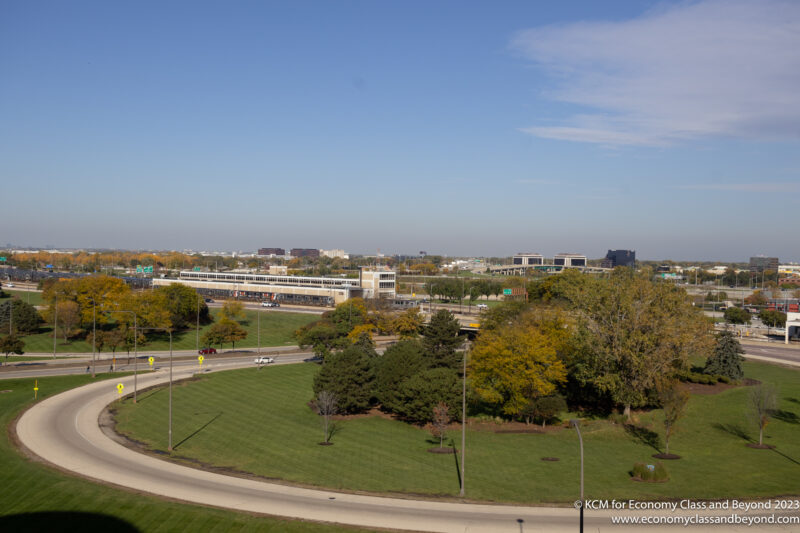

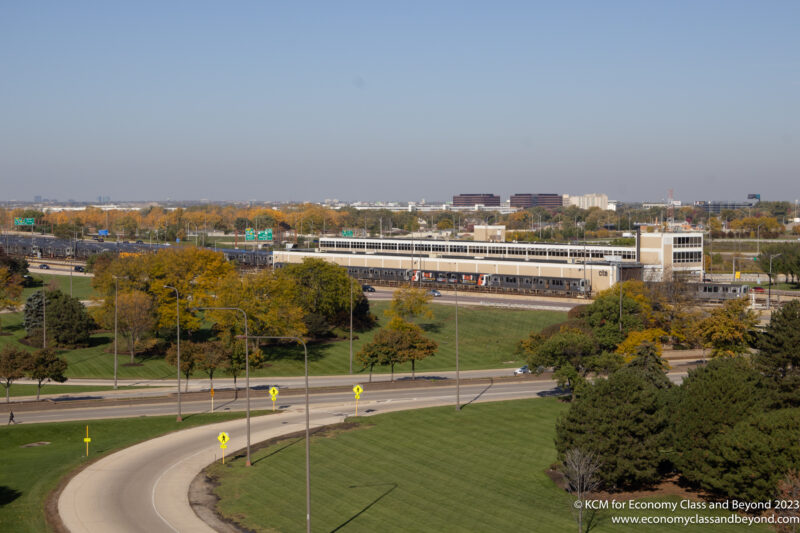
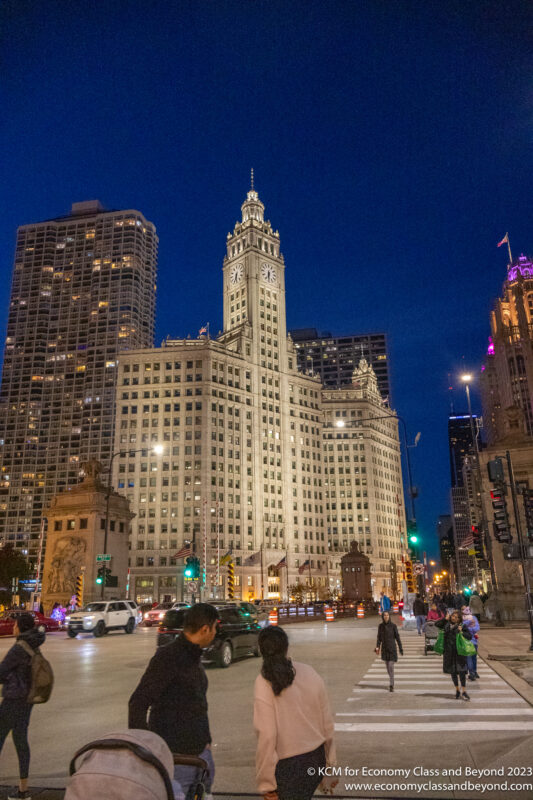
My knowledge of cameras is almost non-existent, but I enjoy reading these anyway. I keep telling myself I’m going to learn proper photography, but it just seems to Not Happen.
And you are correct, it will always be the Sears Tower, just as the building in NYC will always be the Pan Am Building, now and forevermore.
I use a small Canon M6 Mark 2
It has a 32 megapixel sensor.
I have three primes lenses.
= 32mm f1.4
= 56mm f1.4
= 16mm f1.4
And three zooms
15-45mm
16-22mm
55-200mm
This is the perfect travel combo covering all situations.
Try the RP+24-240mm for travel. Love it. No extra lens carrying and changing.
Used to love my 10 year old 650D (18MP) APS-C + Tamron 18-270. Got some great shots. Hardly a 32MP APS-C with primes but good for what I wanted.
The RP + 24-240 cropped images are way better that my old setup. So I’ve gained the same reach by cropping instead of by APS-C!
There are plenty of articles re the quality. Eg Canon’s in camera JPEGS OR CRAW + software with lens adjustment settings works very well.
Be interesting to find out if 26MP FF cropped image matches up to 32MP APS-C image.
Of course primes will always be better. If you have the money and time when shooting to change lenses, it’s the way to go. I’m a ‘grab shot’ / street type shooter when I travel, so the one super zoom suits me.